#Culture in the Courtyard
Explore tagged Tumblr posts
Text




A 360-year-old Ming Dynasty courtyard in Shanghai renovated into a cafe/restaurant.
#china#🇨🇳#chinese heritage#chinese culture#chinese#shanghai#courtyards#Jiangsu + Shanghai#residences#chinese architecture#Ming Dynasty#Chinese courtyards#courtyard houses#Ming#chinese history#prc#sino#people’s republic of china#Shanghai China#jiangnan#east china#Eastern China#coastal China
455 notes
·
View notes
Text

The Bath of Venus
Artist: Sir William Richmond (British, 1842-1921)
Date: c. 1895
Medium: Oil on canvas
Collection: Aberdeen Art Gallery, Aberdeen, Scotland
Description
The beauty of the goddess Venus transcends the painting. The peach and emerald colours surrounding Venus’ body creates an almost golden glow on her skin as she steps into the water.
#mythological scene#roman mythology#venus#bath#roman goddess#goddess of beauty#artwork#fine art#oil on canvas#british culture#oil painting#british art#courtyard#pool#drapery#female figures#trees#sea#flower petals#attendants#water jug#mythological characters#nude figure#sir william richmond#british painter#european art#19th century painting#aberdeen art gallery
221 notes
·
View notes
Text
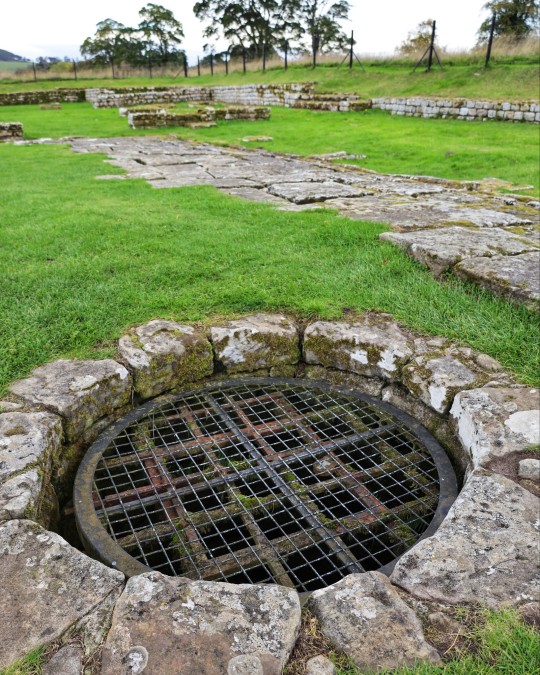
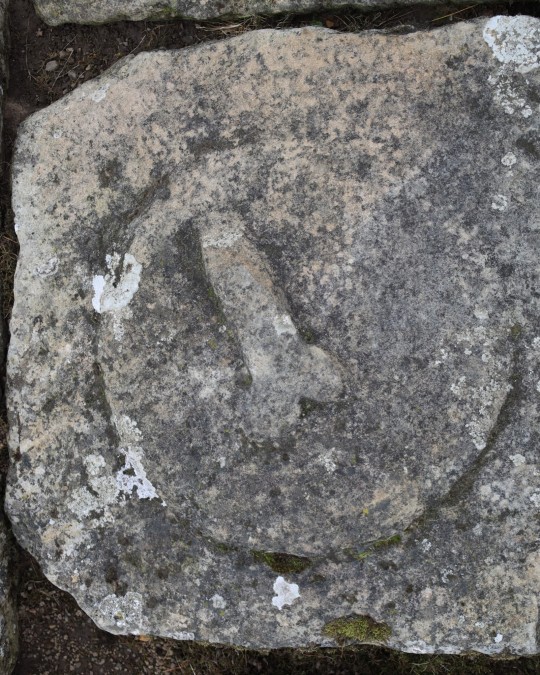
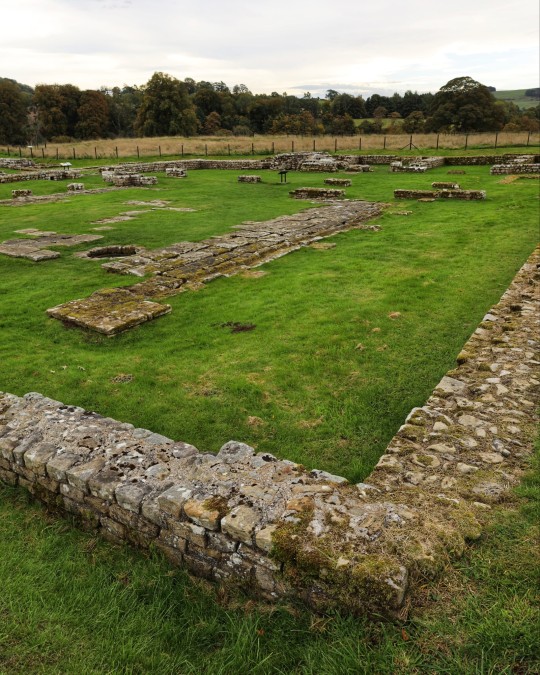


Chesters Roman Fort Headquarters Courtyard and Roman Phallus Relief, Chesters Roman Fort, Hadrian's Wall, Northumberland
#roman#roman army#roman living#roman fort#roman empire#roman building#roman symbols#romans#archaeology#chesters roman fort#landscape#stonework#relic#courtyard#roman society#ancient cultures#ancient craft
1K notes
·
View notes
Text
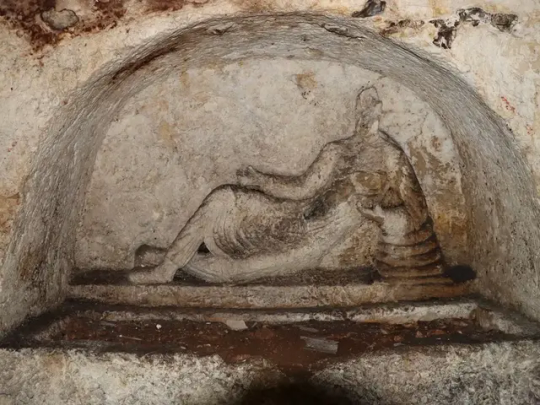
Ancient Rock-Cut Tomb Found in Courtyard of a House in Turkey
Found in the province of Şanlıurfa, the rock tomb features depictions of a reclining man and two winged women alongside an illegible inscription.
Archaeologists have found an ancient tomb carved into bedrock beneath an unassuming courtyard in Turkey.
Discovered in the yard of a house in the southeastern province of Şanlıurfa, the one-chamber tomb is decorated with sculpted reliefs that provide new insights into ancient funerary practices. Şanlıurfa’s governor, Hasan Şıldak, announced the find on social media this week.
One of the rock tomb’s walls features a relief sculpture of a reclining man leaning on his elbow. Another carving in the chamber walls depicts two winged women. Such images “offer clues about the beliefs and lifestyle of the period,” writes Anatolian Archaeology’s Oguz Büyükyıldırım.
The inside of the chamber’s door featured a painted inscription, though damage has rendered it illegible. While researchers haven’t yet dated the tomb, Şıldak says that its decorations are unlike others found at ancient tombs in Turkey.
Per Anatolian Archaeology, ancient rock tombs found in Şanlıurfa usually date to the late Hittite and Roman periods. The Hittite Empire flourished in Anatolia (present-day Turkey) between about 1400 and 1200 B.C.E., while the Romans began establishing rule in the region around the first century B.C.E.

Ancient Rock-Cut Tomb Found in Courtyard of a House in Turkey
The rock tomb is the latest discovery from the Şanlıurfa Cultural Inventory project, which aims to identify new historical assets across the province, as Türkiye Today’s Koray Erdogan reported in October. The provincial government collaborated with Batman and Harran Universities to assemble a team of nine archaeologists, architects and art historians to conduct the research. They’re hoping to record thousands of cultural assets, including 1,700 historical sites that are registered but poorly documented.
As project leader Gulriz Kozbe, an art historian at Batman University, told Türkiye Today, a comprehensive database is essential to protecting cultural artifacts and sites, which are always in danger of sustaining damage from humans or natural disasters—like the earthquakes that struck southern Turkey in 2023.
“Without documentation, the loss becomes irreversible,” Kozbe told the publication. “Having a database would have accelerated restoration efforts in light of such disasters.”
The newly discovered rock tomb “is exactly the type of cultural asset the survey was designed to preserve,” as Artnet’s Adam Schrader writes.
The tomb’s centerpiece carving, the reclining man, resembles some examples of ancient funerary portraiture, according to the publication. He may represent the deceased individual who was entombed at the site, while the reliefs of the winged women could represent guardians watching over him from the afterlife.
The practice of carving tombs into rock was somewhat common across the ancient world. Turkey is home to many of these ancient tombs, including the striking Lycian Rock-Cut Tombs near the southwestern coast and the remote Kapilikaya Rock Tomb in the mountains of the north.
By Sonja Anderson.


#Ancient Rock-Cut Tomb Found in Courtyard of a House in Turkey#Şanlıurfa#ancient grave#ancient tomb#grave goods#ancient artifacts#archeology#history#history news#ancient history#ancient culture#ancient civilizations#hittite empire#roman history#roman empire#ancient art
115 notes
·
View notes
Text




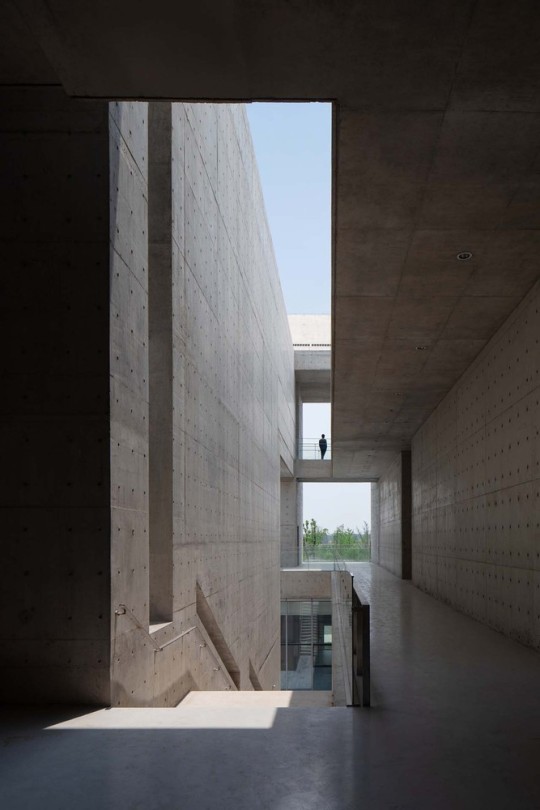


Shou County Culture and Art Center, China - Studio Zhu-Pei
#Studio Zhu-Pei#architecture#design#building#modern architecture#interiors#concrete#minimalism#museum#art#art gallery#cultural center#brutalist#concrete architecture#structure#cool architecture#courtyards#light#china#chinese architecture
231 notes
·
View notes
Text

An Elegant Chieftain in his Palace
Artist: Rudolph Ernst (Austrian, 1854-1932)
Medium: Oil on panel
Collection: Private collection
Description
An elegant Chieftain in his Palace, is a wondrous compilation of selected designs from different sources such as Algeria, Tunisia, Turkey and Andalusian Spain. Ernst's exceptional mastery lies in his ability to combine layers of genuine artifacts in order to create outstanding fantasy. Details such as the 19th century Syrian bronze lamp, on the left of the chieftain, the 18th century Ottoman sash tied around his waist, the blue and green Moroccan octagonal tiles are part of Ernst's classic repertory. The whole is set against a background of Hispano-Moresque architecture inspired by the Alhambra and exemplifies Ernst's skill in visually cross-referencing the archetypal designs of various regions in order to create an extraordinarily evocative whole.
#painting#chieftain#palace#syrian bronze lamp#ottoman sash#costume#moroccan tile#hispano-moresque architecture#genre art#orientalism#oil on canvas#fine art#oil painting#turban#vase#courtyard#rudolph ernst#austrian painter#european art#austrian culture
65 notes
·
View notes
Text

Beatrice
Artist: Thomas Francis Dicksee (British, 1818–1895)
Date: 1883
Medium: Oil on canvas
Collection: Private Collection
Much Ado About Nothing
Beatrice - "I wonder that you will still be talking Signior Benedick, nobody marks you." Much ado about nothing Act I Scene I
Much Ado About Nothing is a comedy by William Shakespeare thought to have been written in 1598 and 1599. The play was included in the First Folio, published in 1623.
The play is set in Messina and revolves around two romantic pairings that emerge when a group of soldiers arrive in the town. The first, between Claudio and Hero, is nearly scuppered by the accusations of the villain, Don John. The second, between Claudio's friend Benedick and Hero's cousin Beatrice, takes centre stage as the play continues, with both characters' wit and banter providing much of the humour.
Through "noting" (sounding like "nothing" and meaning gossip, rumour, overhearing), Benedick and Beatrice are tricked into confessing their love for each other, and Claudio is tricked into believing that Hero is not a maiden (virgin). The title's play on words references the secrets and trickery that form the backbone of the play's comedy, intrigue, and action.
#artwork#portrait#beatrice#woman#much ado about nothing#female figure#comedy by william shakespeare#courtyard#foliage#pink and white gown#gold embroidery#16th century play#english literature#fan#tiara#balustrade#literary character#art and literature#painting#oil on canvas#fine art#oil painting#british culture#british art#thomas francis dicksee#british painter#european art#19th century painting#private collection
31 notes
·
View notes
Text

The Heart of the Rose
Artist: Sir Edward Coley Burne-Jones (English, 1833-1898)
Date: 1889
Medium: Oil on canvas
Collection: Private Collection
Description
This painting forms the final portion of a triptych loosely based on Chaucer's legend of the Romaunt of the Rose. The trilogy details the pilgrim's triumph over temptation and struggle to reach his ultimate desire, the rose bush, which essentially represents his elusive love.
#artwork#the heart of the rose#oil on canvas#pre raphaelite brotherhood#narrative art#fine art#oil painting#rosebush#courtyard#winged figure#women#robe#green gown#blue gown#cloak#foliage#painting#pre raphaelite art#brick wall#trilogy#legend#romaunt of the rose#english culture#english art#edward burne jones#english painter#european art#19th century painting#sir edward coley burne jones
31 notes
·
View notes
Text

Queen Victoria, 1819 - 1901. Reigned 1837 - 1901
Artist: Alfred Edward Chalon (Swiss, 1780-1860)
Date: 1838
Medium: Watercolour on paper
Collection: National Galleries of Scotland, Edinburgh, Scotland
Description
Born at Kensington Palace, the only child of the Duke of Kent and Princess Victoria of Saxe-Coburg, Queen Victoria succeeded to the throne on the death of her uncle, William IV. Not only did she become the longest reigning British monarch but she was also the figurehead of a vast empire. In 1840 she married her cousin, Albert of Saxe-Coburg and Gotha, and their happy marriage brought forth a family of nine children. After Albert’s death she largely retired from public life and spent much of her time at Balmoral in Scotland. This delicate watercolour by Chalon was the very first portrait the young queen sat for after her accession to the throne. She is dressed in the robes she wore when Parliament was dissolved after her uncle’s death, her hat casually discarded on the floor.
#portrait#watercolour#queen victoria#british monarchy#british empire#artwork#fine art#british royal family#british history#full length#seated#chair#costume#architecture#foliage#hat#courtyard#urn#necklace#swiss culture#swiss art#alfred edward chalon#swiss painter#european art#19th century painting#national galleries of scotland
28 notes
·
View notes
Text

Virgil Reading the 'Aeneid' to Augustus, Octavia and Livia
Artist: Jean Baptiste Joseph Wicar (French, 1762–1834)
Date: 1790-1793
Medium: Oil on canvas
Collection: Art Institute of Chicago, Chicago, IL, United States
Description
In the late 18th century, the French Academy promoted a severely Classical approach to history painting as a means to regenerate art -and in contrast to the perceived decadence of the Rococo style. Jacques-Louis David and his students were leading exponents of this Neoclassical approach, treating antique subjects as moral exemplars for contemporary audiences. Here, David’s student Jean-Baptiste Wicar depicted the response of the Roman emperor Augustus and his family to Virgil’s reading of his epic poem the Aeneid, which tells the story of Aeneas, the Trojan prince who settled in Latium after many adventures and was viewed as an ancestor of Augustus. The emotionally charged gestures of Augustus and his sister Octavia suggest that they identify their own family drama with the heroic events recounted by Virgil.
#painting#roman emperor augustus#family#virgil#reading#epic poetry#the aeneid#octavia#courtyard#classic columns#custome#drapery#scroll#full length#seated#steps#table#historical scene#buildings#french culture#oil on canvas#fine art#oil painting#artwork#french art#jean baptiste joseph vicar#18th century painting#european art#art institute of chicago
22 notes
·
View notes
Text

The Beheading of John the Baptist
Artist: Jusepe Leonardo (Spanish, 1601-1653)
Date: ca. 1637
Medium: Oil on canvas
Collection: Museo Nacional del Prado, Madrid, Spain
The Beheading of John the Baptist
According to Matthew 14:1–12 and Mark 6:14–29, Herodias, the wife of King Herod Antipas, was responsible for persuading her husband to behead John the Baptist.
John the Baptist was beheaded to satisfy Herodias’s bloodthirsty hatred. Just as Elijah was hated by Queen Jezebel, so the one who came in the power and spirit of Elijah was hated by Queen Herodias. Employing cunning powers of manipulation and degrading her own daughter, she got what she wanted from her husband, inciting his lust and using his desire to please his guests. She succeeded in silencing her critic, at least outwardly. Later, King Herod was troubled by his guilty conscience, and, when He heard of Jesus Christ’s miracles, he worried that Jesus was actually John the Baptist risen from the dead (Mark 6:14–16)!
#biblical narrative#christianity#courtyard#beheading of john the baptist#biblical scene#biblical art#kneeling#saint john the baptist#men#woman#conversation piece#artwork#sword#robe#cloak#drapery#christian faith#painting#oil on canvas#fine art#oil painting#spanish culture#spanish art#jusepe leonardo#spanish painter#art and the bible#european art#17th century painting#museo nacional del prado
14 notes
·
View notes
Text




Fujian Tulou 福建土楼 "Fujian earthen buildings" are rural dwellings unique to the Hakka people in the mountainous areas in Fujian province, China. The Tulou dwelling was featured in Disney’s Mulan (2020). They were built between the 12th and the 20th centuries. Most of them can house up to 800 people.
A collection of Chinese guardian beasts that were placed on Tulou’s rooftop to guard the house and scare away the evil spirits.






#china#chinese heritage#chinese culture#Fujian#Fujian province#chinese#chinese architecture#architecture#prc#people’s republic of china#🇨🇳#east asia#regional architecture#eastern China#hakka#tulou#hakka tulou#Fujian tulou#courtyards#chinese countryside#chinese mythology#chinese folklore#chinese folk religion#han chinese#chinese houses#chinese courtyards#chinese history#mulan#mulan 2020#hakka people
413 notes
·
View notes
Text

Spring
Artist: Mariano Salvador Maella (Spanish, 1739-1819)
Date: 1805-1806
Medium: Oil on canvas
Collection: Museo Nacional del Prado, Madrid, Spain
Description
The series devoted to the Four Seasons was possibly commissioned from Maella by Charles IV to decorate the Platinum Room in the Casa del Labrador in Aranjuez, although in the end the Four Seasons executed by the French painter Anne-Louis Girodet were hung there. Maella chose the figure of the goddess Flora, accompanied by a cherub, for his allegory of Spring.
#allegorical art#allegorical scene#spring#female figure#winged figure#basket#flowers#courtyard#floral wreath#allegory of spring#fountain#wall#blue horizon#clouds#iron fence#large urn#white gown#drapery#trees#painting#spanish culture#spanish art#oil on canvas#fine art#oil painting#artwork#mariano salvador maella#spanish painter#european art#19th century painting
8 notes
·
View notes
Photo


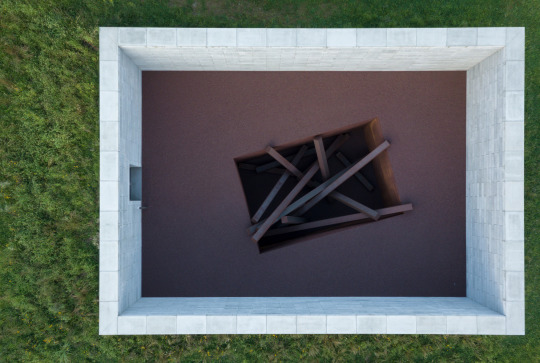

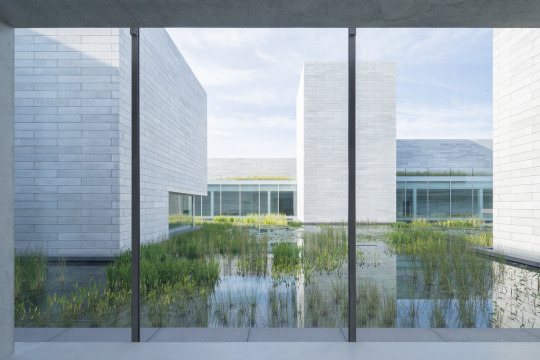


The New Glenstone, Potomac, USA - Thomas Phifer
https://www.thomasphifer.com/
#Thomas Phifer#architecture#building#design#modern architecture#contemporary#museum#art#art museum#cultural architecture#beautiful building#landscape#nature#concrete blocks#masonry#interiors#water#courtyard#usa#american architecture
378 notes
·
View notes
Text

Women of Phoenicia
Artist: Robert Fowler (Scottish, 1853–1926)
Date: 1879
Medium: Oil on canvas
Collection: Walker Art Gallery, Liverpool, England
Description
Phoenicia was a country in Asia, to the east of the Mediterranean. It flourished in commerce and navigation, colonizing ports such as Carthage and Marseilles. In this scene, two women gaze out to sea at a departing ship, possibly carrying their loved ones. The painting may relate to the tragedy of the same name by Euripedes.
#classicism#artwork#genre art#women#phoenicia#mediterranean sea#ship#courtyard#white gown#drapery#flowers#painting#oil on canvas#fine art#oil painting#scottish culture#scottish art#robert fowler#scottish painter#european art#19th century painting#walker art gallery
29 notes
·
View notes
Text

Helena and Hermia
Artist: Edward John Poynter (English, 1836-1919)
Date: 1901
Medium: Oil on canvas
Collection: Art Gallery of South Australia, Adelaide, Australia
Helena and Hermia - Role in A Midsummer Night's Dream
Helena, the daughter of Nedar, is the lifelong friend of Hermia (to whom she often compares herself). Before the events of the play, Helena was betrothed to the nobleman Demetrius, but she was rejected when his affections turned to Hermia. Despite this, Helena maintained an abiding love for Demetrius. Hermia confides in Helena that she plans to elope with a man called Lysander. Helena tells Demetrius of Hermia and Lysander's plans and, together, they follow the eloping lovers.
#painting#helena and hermia#literary characters#women#a midsummer's night dream#william shakespeare#literature#courtyard#marble bench#sea#trees#british culture#british art#drapery#blue gown#white gown#blue horizon#edward john poynter#british painter#european art#english literature#art and literature#oil on canvas#genre art#artwork#oil painting#fine art#20th century painting#art gallery of south australia
43 notes
·
View notes